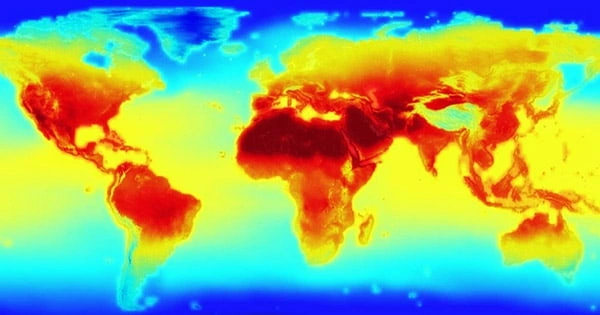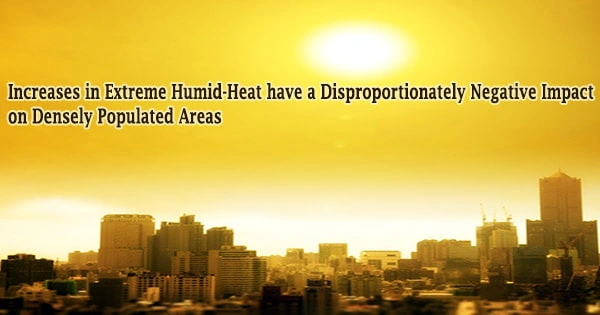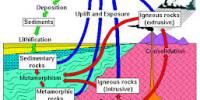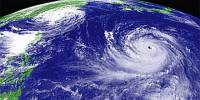Heat is the most harmful type of extreme weather, and it’s even more dangerous when combined with excessive humidity. The effects of not being able to cool yourself via sweating can be lethal. The majority of days are significantly less catastrophic, but as the temperature heats, the worst situations are becoming more frequent.
People living in locations where humid-heat extremes are already a serious threat are experiencing the brunt of the consequences, according to new research from Washington State University scientists.
Their research, which was published in the journal Geophysical Research Letters earlier this month, shows the timing, frequency, and intensity of extreme humid-heat and dry-heat occurrences, as well as recent trends, using hourly data with a geographical resolution of ~25 km (15.5 mi).
“We identify a greater increase in population exposure to humid-heat as compared to dry-heat, emphasizing the importance of understanding humidity changes in a warming world,” said study lead author Cassandra Rogers, a postdoctoral research associate in the WSU Vancouver School of the Environment.
Heat is the most deadly type of extreme weather, and it’s even more harmful when there’s a lot of humidity. According to new research from Columbia University, humid heat extremes are becoming increasingly common. Based on wet-bulb temperatures, the researchers looked at the most extreme (top 5% of) days by U.S. locale.

According to the researchers’ analysis, most of Europe, northern South America, Africa, the Arabian Peninsula, and the island chains between the Indian and Pacific Oceans, as well as the oceans of the Northern Hemisphere, have experienced statistically significant increases in both dry and humid-heat extremes.
However, there were some particularly alarming trends in a few parts of the world.
“For example, increases in the occurrence of humid-heat were strongest over highly populous regions in South and Southeast Asia and the southeastern U.S. where changes in dry-heat frequency, as measured by temperature alone, are small or non-significant,” said study coauthor Deepti Singh, an assistant professor in the WSU Vancouver School of the Environment.
Because a large portion of the land area in these regions is cropland, and the timing of high irrigation rates over places like India coincides with the warmest temperatures, Rogers and Singh’s work suggests that increasing irrigation intensity could be increasing humidity and, as a result, extreme humid-heat.
We identify a greater increase in population exposure to humid-heat as compared to dry-heat, emphasizing the importance of understanding humidity changes in a warming world.
Cassandra Rogers
Unless steps are done to mitigate the impact on vulnerable workers, the implications could be severe.
“With many areas in these regions already approaching the survivability limit of heat and humidity, manual, labor-intensive outdoor work such as agricultural activities, construction and pulled- or cycle-powered rickshaw transport could effectively become infeasible during the hot parts of the day for much of the year,” Rogers said.
The researchers’ findings highlight the need to better understand the social implications of humid heat due to increased population exposure and expected increases, particularly in susceptible locations.
This might be accomplished by considering how such extremes connect with the timing of location-specific human activities, demography, and socio-economic factors that increase heat stress exposure.
Communities with vulnerable workers who are directly exposed to extreme heat, such as farm and urban outdoor laborers, as well as people with limited access to air conditioning, electricity, community cooling centers, and health and emergency medical services, will benefit from a better understanding of the human health effects of humid-heat stress in the future.
“Addressing the socio-economic factors and infrastructure issues through policy, adaptation measures or financial aid can help reduce the severe health impacts of committed climate change,” Singh said.
The study’s research team includes scientists from Syracuse and Columbia Universities in New York, as well as NASA’s Jet Propulsion Laboratory in California, in addition to Rogers and Singh.
Their contributions to the project include data from weather stations on every continent, as well as the ERA5 reanalysis, a climate dataset that gives hourly weather conditions for the past 42 years around the world. The ERA5 data had never been utilized to investigate humid-heat extremes before.
The newly available ERA5 data enables researchers to analyze heat extremes over all land and ocean regions, including many previously poorly seen and studied sites, by combining numerous observation sources such as weather stations, ocean buoys, and satellite data.
“Our study extends previous research to provide information on changes in dry and humid-heat extremes for understudied regions of Africa, Southeast Asia, and South America, where reliable, long-term, station data is limited,” Singh said.
“Further, we show that strong increases in extreme heat frequency are accompanied by an expansion of the number of months during which they occur, which has consequences for human health and outdoor activities in these regions.”
















